Discovering Nebraska's Diverse Wildlife and Habitats
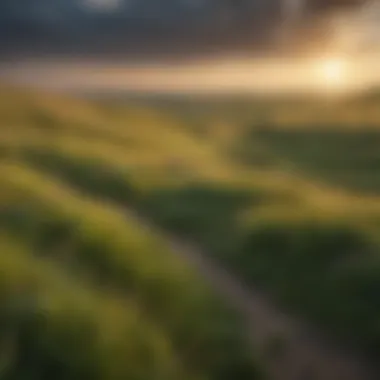
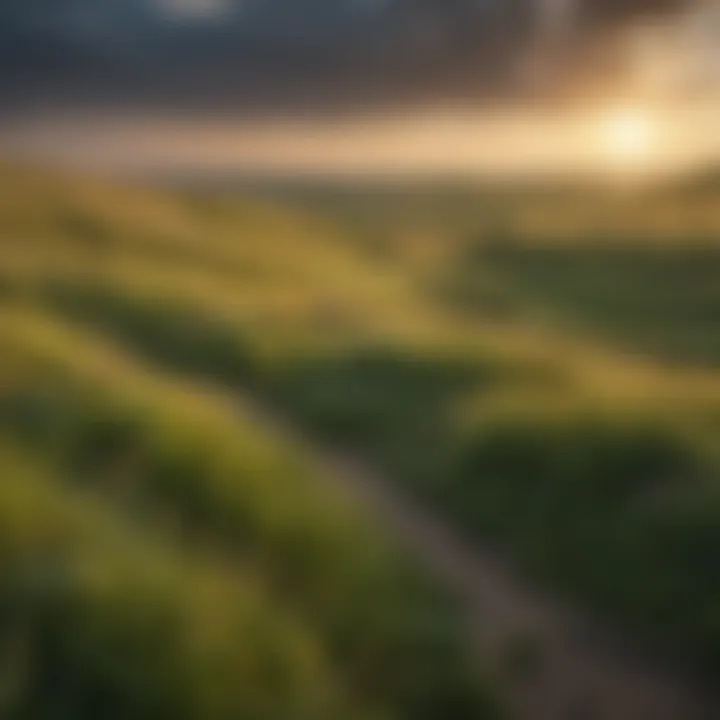
Intro
Nebraska, often overshadowed by its larger neighbors, holds within its borders a treasure trove of biodiversity. From rolling grasslands to serene wetlands, each habitat tells a story of the intricate relationships that define its wildlife. As we take a deeper look, we'll unravel the layers of Nebraska's ecosystems, identify the inhabitants that thrive within them, and assess the conservation efforts underway to preserve this ecological gem.
In the heart of this exploration, it becomes clear how these ecosystems collectively contribute not only to the state’s natural charm but also to the global environment. Understanding wildlife isn't merely about recognizing species; it's about grasping the significance of their roles and the balance they maintain. Throughout this article, we will unpack vital themes surrounding Nebraska's unique wildlife and the measures necessary for sustainability and conservation.
Preamble to Nebraska's Wildlife
Nebraska occupies a unique spot in the heart of the United States, stretching from the rolling bluffs of the Missouri River to the vast plains and diverse wetlands. Its wildlife reflects this geographical patchwork, housing an astonishing array of species across various ecosystems. As a state often overlooked in discussions of biodiversity, Nebraska boasts significant natural riches that merit greater recognition.
Understanding Nebraska's wildlife serves multiple purposes. First and foremost, it highlights the intricate relationships among species and their habitats. This interdependence is crucial, as disruptions in one area can cascade throughout the ecosystem. Furthermore, recognizing the variety of life that thrives in Nebraska raises awareness about the importance of conservation efforts aimed at protecting these fragile ecosystems. With human activity pressuring natural habitats, it becomes increasingly urgent to address these issues and promote sustainable interactions with wildlife.
Geographical Overview
Nebraska's geography presents a unique blend of environments, from the eastern woodlands to the western sand hills. The state is laced with rivers, including the Platte and Republican, that meander through its heart, creating critical habitats for numerous species. Wetlands abound in the eastern region, providing vital resources for migratory birds and amphibians alike.
In the western part, you find unique ecosystems characterized by towering, grassy prairies mixed with rocky outcrops, each home to different flora and fauna. Each of these landscapes supports its own web of life, with species specially adapted to thrive in their particular niches. For instance, the Sand Hills harbor a range of wildlife, from the swift-footed pronghorn antelope to the elusive spotted skunk.
Significance of Biodiversity
Biodiversity in Nebraska is more than just a collection of species; it is the life force of the state's ecological systems. Such richness enhances ecosystem resilience, enabling it to withstand adverse conditions like disease or climate variation. For agricultural sectors, a broader range of species means healthier soil and better crop production due to the presence of natural pollinators and pest controllers.
Moreover, diverse wildlife plays a key role in cultural and recreational aspects of life in Nebraska. Birdwatching, hunting, and nature walks are more than hobbies; they're gateways for communities to connect with the natural world. The benefits extend beyond enjoyment—biodiversity contributes to local economies through tourism and conservation initiatives.
"A diverse environment is a blessing, providing not just aesthetic value but crucial services to humanity."
As human needs continue to escalate, the significance of protecting Nebraska's rich wildlife cannot be overstated. Collective action is essential to preserve this natural heritage for both current and future generations, making the understanding of Nebraska's wildlife a vital cornerstone in maintaining the balance of our planet.
Key Ecosystems in Nebraska
Nebraska's ecosystems are not just a backdrop; they are vibrant tapestries woven together to create a rich, natural heritage. Each ecosystem plays a pivotal role in supporting diverse forms of life and contributes significantly to the state's authority as a wildlife haven. By examining these key ecosystems, we uncover the layers of complexity and interdependence that exist among the flora and fauna, as well as their environmental significance.
Grasslands and Prairies
The grasslands of Nebraska are a classic representation of the American prairies, sprawling extensively across the state. Dominated by tall grasses and wildflowers, these areas serve as crucial habitats for numerous species, including the iconic pronghorn antelope and the elusive western meadowlark.
What truly sets Nebraska’s grasslands apart is their ability to sustain a variety of wildlife. The rich soils produced from centuries of nutrient cycling support not only plant life but also insects and rodents, which in turn become food for larger mammals and birds of prey. The seasonal fluctuations in temperature and rainfall create an environment that thrives on biodiversity.
"Grasslands are the lungs of the planet, sustaining communities in a balance between flora and fauna."
Furthermore, these ecosystems benefit agricultural practices by preventing soil erosion and improving water retention, making the landscape both beautiful and functional for human livelihood. However, challenges remain as urban sprawl and agricultural expansion threaten these delicate environments.
Wetlands and Rivers
Wetlands and rivers are the lifeblood of Nebraska’s ecosystems; they offer essential resources and unique habitats for many species. The Missouri River, for instance, serves not just as a water source but as a corridor for migratory birds such as the American white pelican and various species of ducks. The wetlands, with their rich, hydric soils, are critical for filtering pollutants, managing floodwaters, and maintaining the local hydrology.
These areas are especially invaluable as breeding grounds for amphibians and numerous fish species. Freshwater ecosystems provide a safe haven for young organisms to grow, as the complex structure helps protect them from predators. It’s a delicate balance, however; pollution and development are significant threats that can disrupt these life cycles. Protecting wetlands ensures that future generations can continue to enjoy and study these vibrant ecosystems.
Forests and Woodlands
While Nebraska is widely known for its open spaces, it hosts an array of forests and woodlands tucked into its landscape. These areas provide habitat for many mammals, including white-tailed deer, foxes, and various woodland birds.
The diversity of tree species, from oak to cottonwood, adds to the complexity of these woodlands. Each tree contributes to the forest’s ecosystem, providing food and shelter for countless organisms—from insects to birds, creating a microcosm of ecological interaction.
Moreover, woodlands in Nebraska offer more than just habitats; they play a significant role in carbon sequestration. Healthy forests absorb carbon dioxide, mitigating climate change effects and providing cooler microclimates. However, they face threats such as invasive plant species and logging activities, which disrupt these intricate ecosystems. Managing these resources is crucial for preserving their long-term viability.
Diversity of Species in Nebraska
Nebraska’s wildlife is like a vibrant quilt, stitched together with diverse species that play pivotal roles in the state’s ecosystems. This diversity isn't just a collection of unique creatures but holds intrinsic ecological value. Each species, whether it's an imposing bison roaming the prairies or a delicate bird flitting among wetlands, contributes to the balance within its habitat. The variety of life forms helps in pest control, seed dispersal, and even influences groundwater quality. Thus, understanding the intricate web of species provides insight into the health of Nebraska’s natural spaces.
Mammals of Nebraska
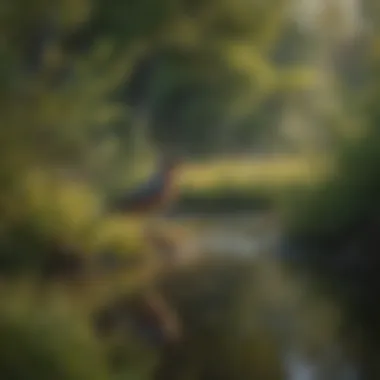
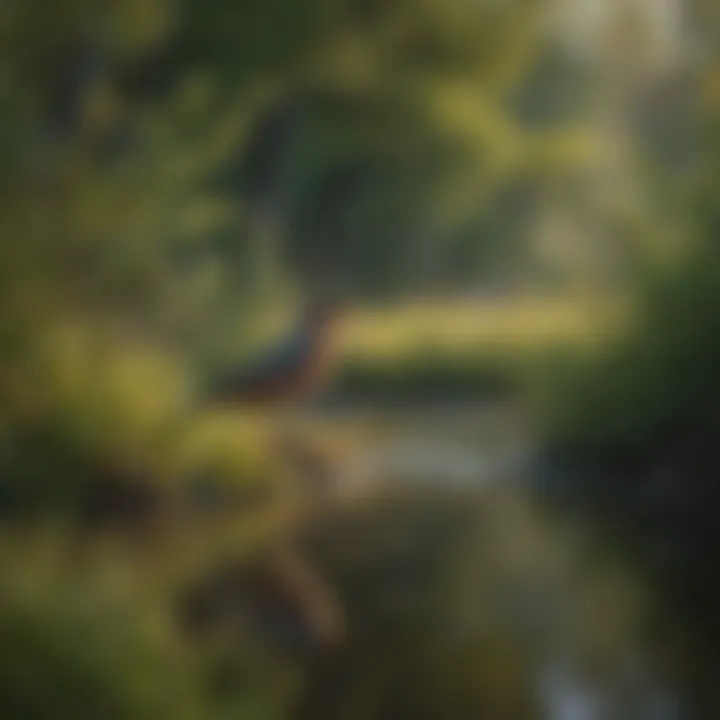
Habitats and Ranges
In Nebraska, mammals dwell in a variety of habitats that span grasslands, forests, and wetlands. Grasslands, for instance, are teeming with life, and they're particularly known for supporting species like the pronghorn antelope and a range of smaller mammals such as prairie dogs and foxes. These animals rely on the open spaces for both foraging and evading predators. On the other hand, the forested areas offer different occupants, such as deer and raccoons, who find refuge in thicker cover. This wide range of habitats is crucial because it fosters greater species richness across the landscape.
The unique characteristic of these habitats is their connectivity. They often overlap, which allows species to roam, seek food, and maintain genetic diversity. However, habitat fragmentation due to urban development is a drawback. As human activities encroach on these spaces, the ranges of many mammals shrink, leading to challenges for survival and breeding. This is a trend that needs attention; balancing human expansion with wildlife needs is vital.
Impact of Human Activity
Human activity has had multifaceted impacts on Nebraska's mammals. Land use changes, such as agriculture and urban expansion, have reshaped the natural environment. Many species experience challenges like habitat loss and increased competition for resources. On the flip side, human efforts in conservation have birthed initiatives aiming for balance, such as wildlife corridors and protected areas that serve as refuges for endangered species.
The critical aspect of this impact is its duality; it showcases humanity’s power to both harm and help. For instance, initiatives that promote sustainable land use can aid in reducing negative effects, while certain urban areas could provide safe havens for species traditionally found in less populated areas. Recognizing this intricate relationship is essential for formulating coherent wildlife management strategies.
Birds in the Region
Migratory Patterns
The diverse avian population in Nebraska is deeply tied to its migratory patterns. Every spring and fall, thousands of birds make their way across the state due to its strategic location along the Central Flyway. This migratory corridor allows birds such as the sandhill crane to rest and feed before continuing their journey. Such patterns serve as a natural spectacle; the sight of these birds loafing in the wetland areas is not just beautiful, but it highlights the importance of preserving these key habitats during migration.
Furthermore, migratory birds contribute to Nebraska's ecosystems by participating in seed dispersal and pest control during their temporary stays. This eye-catching behavior is beneficial for educating the public about the importance of wildlife conservation, as people often find fascination in these massive gatherings of species.
Conservation Status
The conservation status of bird species in Nebraska represents an ongoing concern. Many birds are experiencing population declines primarily due to habitat loss and climate-related changes. Specific species such as the piping plover and whooping crane are on the brink of extinction, prompting extensive conservation efforts. Areas like Rowe Sanctuary offer breeding grounds for sandhill cranes and are crucial for maintaining these populations.
Keeping a close eye on the conservation status fosters awareness about the challenges these birds face. Encouraging citizen involvement through organizations dedicating their work to avian conservation can make lasting impacts. Furthermore, these initiatives can lead to enhanced habitat preservation, ultimately supporting broader biodiversity goals.
Reptiles and Amphibians
Adaptations
Nebraska's reptiles and amphibians exhibit a range of adaptations that suit their unique environments. The plains leopard frog, for example, is adjusted to thrive in both aquatic and semi-terrestrial habitats. It exhibits remarkable camouflage that aids in predation avoidance and hunting.
These adaptations are significant in understanding how species survive and thrive in specific niches. Observing these can lead to broader insights into ecological interactions and the overall health of ecosystems. One must appreciate how each creature’s way of life intricately connects to every of our natural spaces.
Habitat Requirements
The habitat requirements of reptiles and amphibians in Nebraska are quite specific. Many species are dependent on temporary wetlands for breeding, such as the Western tiger salamander, which relies on ephemeral ponds to lay eggs. With mere slight environmental changes, such as drought or pollution, these habitats can be heavily impacted.
Recognizing their habitat preferences is vital for conservation efforts. By identifying and protecting key areas where these species thrive, conservationists can create effective strategies to mitigate threats from development and climate change—all while promoting healthier ecosystems.
Fish Species in Nebraska Waters
Freshwater Ecosystems
Nebraska’s freshwater ecosystems are diverse, comprising rivers, lakes, and wetlands, all being home to a variety of fish species. The Missouri River, for instance, is a vital habitat for species like the paddlefish and channel catfish. Freshwater bodies are crucial not only for fish but for the entire ecology surrounding it, making these habitats necessary for ecological health.
These ecosystems provide nutrients and support the broader food web. In-depth studies about these ecosystems can yield insights into aquatic health indicators and help guide future conservation decisions to preserve fisheries upon which both wildlife and humans depend.
Challenges Facing Aquatic Life
Aquatic life faces numerous challenges, from water pollution to habitat degradation. For instance, runoff from agricultural practices leads to nutrient loading in water bodies, which can cause harmful algal blooms that threaten fish populations. Additionally, invasive species like the common carp have established themselves, harming native fish species and altering ecosystems.
Highlighting these challenges makes the case for stringent environmental regulations and best practices among landowners. By addressing these issues, stakeholders can foster healthier freshwater environments, benefiting both aquatic life and the surrounding communities that rely on these ecosystems for recreation and livelihood.
Threats to Nebraska’s Wildlife
Understanding the challenges that threaten Nebraska's wildlife is crucial for maintaining the state’s biodiversity. Habitat destruction, climate change, and the invasion of non-native species not only diminish populations but also disrupt the delicate balance of ecosystems that have formed over centuries. Being aware of these threats provides insight into how we can protect the rich tapestry of life that Nebraska embodies. Managing these threats is not just a scientific endeavor; it is intertwined with community action and policy initiative. If we ignore these dangers, we risk losing not just species but whole ecosystems, ultimately affecting humans as well.
Habitat Destruction
Habitat destruction is a pressing issue in Nebraska. As urban areas expand and agricultural practices intensify, natural landscapes undergo significant transformations, leading to the fragmentation of habitats. As a result, species that once thrived may find their territories reduced to patches too small for sustainable living. For instance, prairie dog colonies, essential for many other species, are often eliminated in favor of farmland. This not only removes these unique mammals but impacts creatures that rely on them, such as ferrets and eagles.
- Urban Development: The housing boom leads to more roads and structures, encroaching on wildlife's nesting and feeding grounds.
- Agricultural Expansion: Increased mechanization and monoculture practices can overexert the land and disrupt the balance between native flora and fauna.
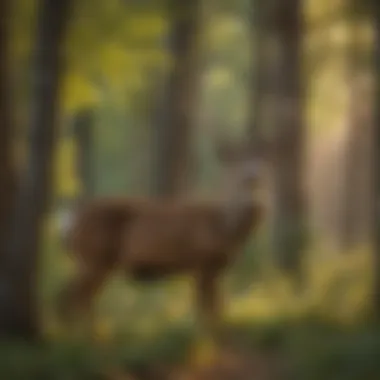

These actions increase
fragmentation, making it difficult for species to migrate or find mates, directly contributing to biodiversity loss in the region.
Climate Change Effects
Climate change poses another layer of threat to wildlife in Nebraska. The gradual shift in climate patterns leads to alterations in temperature and precipitation, which in turn affect the behavior and survival of various species. For example, migratory birds might arrive too early or too late for the crucial breeding windows, putting their populations at risk.
- Temperature Variability: Some species flourish under specific temperature ranges. When those change dramatically, it could mean boom or bust for local wildlife.
- Changing Water Levels: Fluctuations in rainfall affect wetland habitats crucial for species like amphibians and certain fish, disrupting their life cycles, particularly during breeding seasons.
The impacts of climate change also extend beyond the immediate effects on species. Entire ecosystems may shift, altering the food web and leading to unforeseen consequences.
Invasive Species
The introduction of invasive species in Nebraska is an enormous threat that alters local ecosystems dramatically. These non-native species often outcompete native flora and fauna for resources, leading to declines in native populations.
- Common Examples: Plants like Eurasian watermilfoil and animals such as zebra mussels can cause significant ecological disruption, choking waterways and pushing out native species.
- Economic Costs: Besides the environmental cost, invasive species bring considerable economic burdens through the need for management and restoration efforts.
Successful management of invasive species requires sustained effort. Collaborations between state agencies and local communities can lead to effective monitoring and control programs, safeguarding native biodiversity.
Through recognizing these threats, we can work together to create and implement effective strategies for conservation. Knowing the dangers looming over Nebraska's wildlife not only empowers individuals but also strengthens community ties, pushing for a collective effort in preserving this unique ecosystem.
Conservation Efforts in Nebraska
Conservation efforts in Nebraska play a pivotal role in safeguarding the state’s rich wildlife and diverse ecosystems. The unique landscapes, from the rolling prairies to the serene wetlands, are cradles for countless species. However, the pressures of urban development, agriculture, and climate change challenge these natural havens. Therefore, well-coordinated conservation initiatives are essential. They not only aim to protect habitats but also to engage communities, ensuring that every Nebraskan has a stake in preserving their natural heritage.
State and Federal Initiatives
Efforts at the state and federal level lay the groundwork for comprehensive wildlife protection strategies. Programs funded by government resources often address critical needs, from habitat enhancement to species recovery.
Funding and Resources
Funding is crucial for the implementation of conservation strategies in Nebraska. Federal programs, like the State Wildlife Grants, channel significant funds into local initiatives. These resources strengthen various projects, allowing for habitat restoration and species management. The key feature of these funds is their ability to adapt according to pressing needs. For example, when certain species are at risk, funds can be redirected swiftly to support their recovery efforts.
One advantage of such funding is its potential for flexibility. This adaptive use of resources enables quick response to environmental changes and emerging challenges. However, it also comes with some disadvantages, such as dependency on annual appropriations and political shifts that could affect program continuity.
Legislation for Protection
Legislation is another cornerstone of Nebraska's commitment to wildlife conservation. The Endangered Species Act remains significant, aiming to prevent the extinction of threatened and endangered species. This law serves as a protective umbrella, ensuring critical habitats are preserved.
A key characteristic is its strong regulatory framework, offering various protections to at-risk species. For our article, this legislation is indeed beneficial. It not only helps in sustaining biodiversity but also fosters a culture of conservation awareness. However, legislation can sometimes be a double-edged sword. Though it offers protection, the bureaucracy involved can slow down necessary actions that require immediate attention.
Non-profit Organizations and Their Roles
Non-profit organizations are game changers in Nebraska's conservation landscape. They work collaboratively with state agencies and community members, reinforcing grassroots involvement in wildlife protection.
Collaboration with Communities
Collaboration with communities is vital. Non-profit groups often engage local volunteers and stakeholders to create conservation programs that resonate at the local level. Initiatives like The Nebraska Land Trust collaborate with landowners to protect ecosystems through easements and cooperative management.
The standout feature of this collaboration is its localized approach. By working directly with communities, they tailor conservation efforts to reflect the specific needs and values of those affected. This participatory model has the advantage of building goodwill and active stewardship among citizens. Yet, it can also face challenges, such as differing priorities among stakeholders that could complicate consensus-building.
Public Awareness Campaigns
Public awareness campaigns are essential for fostering a conservation ethic among Nebraskans. Organizations often launch campaigns that inform the public about local wildlife, encouraging responsible interactions with nature. For example, initiatives run by groups like The Nebraska Wildlife Federation educate people on native species and their habitats, raising awareness of ecological balance.
These campaigns thrive on their engaging and informative nature, making conservation relatable and urgent. They leverage social media, community events, and educational workshops. One notable advantage is their ability to mobilize public support for conservation actions. However, they can be limited by resource constraints, as reaching a wider audience requires funding and strategic planning.
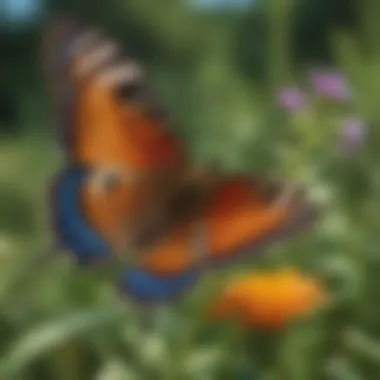
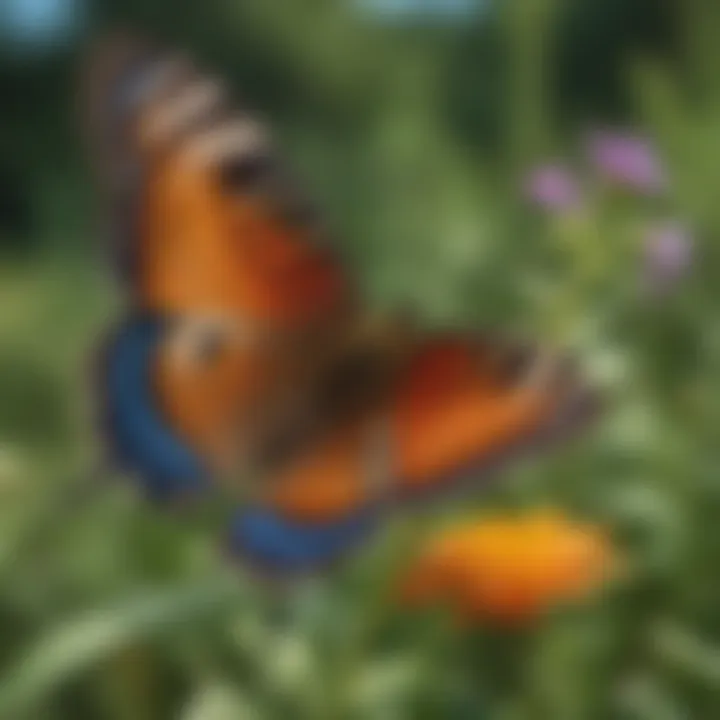
Community Engagement in Wildlife Preservation
Community engagement is a cornerstone in the effort to preserve Nebraska's wildlife. When locals get involved, they not only contribute to the immediate tasks of conservation but also foster a deeper connection with their natural surroundings. Engaging the community cultivates awareness about the importance of biodiversity and helps weave a fabric of protection for various species that call Nebraska home. By uniting efforts, the potential for meaningful impact multiplies, ensuring the survival of habitats and ecosystems that are strained by human activities and the ever-changing climate.
Educational Programs and Outreach
One effective avenue for fostering community engagement is through educational programs. These initiatives often provide invaluable information about local wildlife and habitats. Schools, non-profits, and state organizations can collaborate to create workshops and seminars that teach residents about the rich biodiversity within Nebraska.
Such programs might cover topics like:
- The vital role of native species in the ecosystem.
- Understanding the interdependence between various species.
- Consequences of habitat destruction and climate change.
- Ways individuals can help, such as through responsible outdoor activities.
Moreover, outreach programs can utilize social media platforms, such as Facebook and Reddit, to reach a broader audience. Sharing articles or interactive content can pique curiosity and encourage participation in conservation activities. This strategy also serves to nurture a greater appreciation and respect for Nebraska’s wildlife.
Volunteer Opportunities
Creating volunteer opportunities is another significant component of community engagement. These initiatives not only allow individuals to contribute to conservation efforts, but they also promote a sense of ownership over local wildlife and habitats.
Volunteering could take several forms, including:
- Habitat restoration projects where residents can get hands-on experience planting native vegetation or cleaning up natural areas.
- Citizen science initiatives that invite locals to participate in wildlife monitoring or data collection to understand population trends.
- Workshops for practical skills, like crafting birdhouses or designing pollinator gardens, which can be installed in local parks or backyards.
These opportunities enable individuals to learn while having an active impact on their environment. Moreover, they encourage community bonding as people gather to work toward a shared goal: preserving the rich tapestry of Nebraska's wildlife.
"When communities unite for a cause, even the smallest efforts can evolve into significant changes in preserving the environment they share."
In summary, community engagement in wildlife preservation merges education and action, empowering residents to play an integral role in Nebraska’s conservation landscape. By building awareness and providing practical ways to get involved, communities can foster lasting change in the environment.
Future Directions for Wildlife Conservation in Nebraska
As we glance towards the horizon of wildlife conservation in Nebraska, it's essential to understand the implications of integrating modern innovations and sustainable approaches. These new directions not only aim to enrich ecosystems but also engage communities in preserving their natural heritage. The future of Nebraska’s wildlife hinges on strategically adopting these methodologies, ensuring that the diverse flora and fauna continue to thrive against mounting challenges.
Integrating Technology in Conservation
Technology has a compelling role to play in conservation efforts. Its implementation can be seen in various ways, including:
- Wildlife Monitoring: Advanced tracking devices and that can monitor animal movements help conservationists gather essential data. GPS collars, for instance, not only track migration patterns but also identify critical habitats that need protection. This information plays a key role in making informed decisions about land use and animal management.
- Data Analytics: Machine learning and big data allow researchers to analyze vast amounts of ecological data quickly. These insights can help predict wildlife trends and identify potential threats before they escalate.
- Citizen Science Platforms: Involving the public through mobile applications can enhance data collection. These digital tools empower anyone to report wildlife sightings or environmental changes, fostering a sense of ownership and vigilance in conservation.
These technological advancements can shift the conservation paradigm from reactive to proactive, making Nebraska's approach more efficient and responsive.
Promoting Sustainable Practices
Sustainability must become the backbone of wildlife conservation efforts, ensuring that natural resources are used responsibly. Some key elements include:
- Agricultural Practices: Encouraging farmers to adopt sustainable practices can significantly impact wildlife habitats. Techniques like cover cropping, reduced tillage, and integrated pest management can improve soil health and reduce runoff, creating a healthier ecosystem for various species.
- Renewable Energy Projects: As energy needs rise, so does the need to balance development with ecological preservation. Initiatives that focus on solar and wind energy not only contribute to reducing carbon footprints but can also be aligned with wildlife corridors, making it easier for animals to traverse fields without conflict.
- Community Engagement: Promoting workshops and education initiatives that teach sustainable living practices can create a culture of conservation. When local communities are informed about the benefits of preserving wildlife, their commitment increases, further strengthening conservation efforts.
"Sustainability isn’t just about conserving resources; it's about ensuring life continues to thrive in harmony with nature."
The path forward for wildlife conservation in Nebraska is as complex as it is promising. By embracing technology and promoting sustainable practices, the state can bolster its efforts to protect its diverse ecosystems, ultimately positioning itself as a leader in wildlife conservation.
End and Call to Action
As we reflect on the intricate landscape of Nebraska's wildlife, it's essential to recognize the significance of coming together to safeguard this rich natural heritage. The journey we've embarked upon throughout this article has shed light on not only the diverse ecosystems teeming with life but also the pressing challenges these creatures face. The collective efforts of communities, organizations, and individuals play a pivotal role in ensuring that Nebraska's wildlife continues to thrive in harmony with human advancement.
The Importance of Collective Efforts
When musicians play together, the harmonies produced resonate far beyond the notes themselves. Similarly, in wildlife conservation, collaboration amplifies the impact. Be it governmental agencies, non-profits, or local citizens, each entity contributes a piece to the puzzle. They work in unison to implement protective legislation, restore habitats, and mitigate the effects of climate change. The sharing of resources enhances the effectiveness of conservation initiatives. Moreover, as stakeholders join forces, they foster a sense of camaraderie that elevates public awareness and encourages community participation.
For instance, initiatives like the Nebraska Game and Parks Commission have joined hands with local conservation bodies to organize wildlife monitoring projects. This not only aids in tracking species populations but also helps engage local volunteers in hands-on environmental work. Such cooperation results in sustainable practices that benefit both wildlife and the ecosystems they inhabit.
Encouraging Stewardship Among Citizens
A responsible citizen isn’t just someone who adheres to laws; they are individuals who take the initiative to protect their surroundings. The urgency of encouraging stewardship among the citizens of Nebraska can't be overstated. Opinions and actions of everyday people can either bolster or hinder conservation efforts. To foster a culture of stewardship, it's essential to cultivate awareness and appreciation for the wildlife that shares our landscapes.
Engagement can start small - with families participating in local clean-up days or educational workshops. Schools also have a critical role in this endeavor. Incorporating conservation topics into curricula can instill a passion for wildlife among the younger generation. When children learn about the habitats around them, they are more likely to partake in preservation efforts as adults.
Ultimately, the call to action is clear. Nebraska's wildlife is a legacy worth preserving, and it’s upon all of us to extend our hand in stewardship. By working collectively and inspiring others in our communities, we can ensure that the melodious song of Nebraska's wildlife continues to flourish for generations to come.
"The greatness of a nation and its moral progress can be judged by the way its animals are treated." – Mahatma Gandhi







